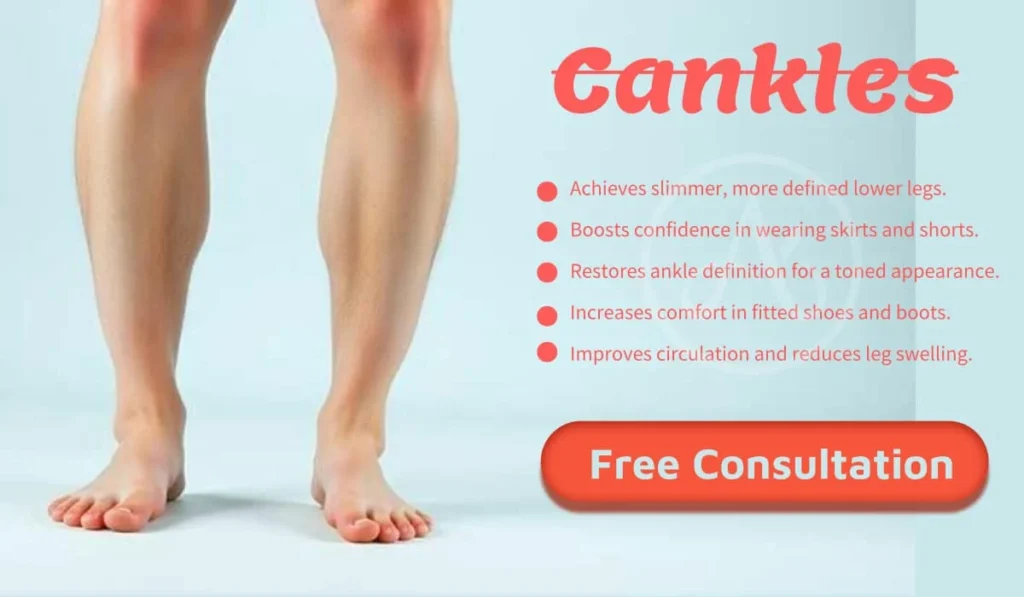The term cankles is a blend of the words “calf” and “ankles,” used to describe a lack of distinct separation between the calf and the ankle. While it’s often treated with humor, for many people, cankles can be a real source of self-consciousness and discomfort. In some cases, they may even indicate underlying health issues. This article explores what causes cankles, the treatments available, and home remedies that can help.
What Are Cankles?
Cankles occur when the calf appears to merge directly into the foot without a defined ankle. This can result from fat accumulation, water retention, or swelling due to medical conditions. While anyone can develop cankles, they’re more common in women and can be influenced by genetics, weight, pregnancy, or certain medical conditions.
Causes of Cankles
Understanding the underlying causes of cankles is crucial for finding the right treatment. Here are some of the most common reasons:
1. Genetics
Some people are simply predisposed to having a thicker ankle area due to their genetic body structure. If your parents or close relatives have cankles, there’s a good chance you may develop them too.
2. Obesity and Weight Gain
Excess weight can lead to fat deposits in the lower legs and ankles, obscuring the natural contour between the calf and ankle. Weight-related cankles are often accompanied by other fat accumulation in different areas of the body.
3. Water Retention
Swelling caused by fluid retention, also known as edema, can make ankles look puffier. This is common during pregnancy, after long periods of standing or sitting, or due to high salt intake.
4. Medical Conditions
Certain health issues can contribute to swelling in the lower legs, including:
-
Heart failure
-
Kidney disease
-
Liver problems
-
Venous insufficiency
-
Lymphedema
These conditions can cause fluid buildup, leading to swollen ankles and cankles. Always consult a healthcare provider if swelling is persistent or painful.
5. Medications
Some medications, such as steroids, antidepressants, hormone treatments, and blood pressure drugs, can cause fluid retention and result in swollen ankles.
Treatments for Cankles
If you’re looking to reduce or eliminate cankles, the best treatment depends on the root cause. Here are several treatment options:
1. Weight Loss and Exercise
For those whose cankles are due to weight or fat accumulation, a consistent exercise routine and healthy eating can be very effective. Targeted lower-body workouts can tone muscles and reduce fat in the legs and ankles.
Best Exercises for Slimming Ankles:
-
Calf raises
-
Jump rope
-
Walking or jogging
-
Cycling
-
Swimming
2. Medical Treatment for Underlying Conditions
If cankles are due to a medical condition like lymphedema or venous insufficiency, treating the root issue is essential. This might involve:
-
Compression stockings
-
Diuretics (water pills)
-
Lymphatic massage
-
Medication adjustments
3. Cosmetic Surgery
In extreme or stubborn cases, some individuals turn to cosmetic procedures such as liposuction or calf contouring surgery. These procedures remove excess fat and sculpt the ankle area for more definition.
Note: Surgery comes with risks and should be considered only after other options have been explored.
Home Remedies for Cankles That Work
In addition to medical and fitness treatments, there are several natural home remedies that may help reduce the appearance of cankles.
1. Reduce Salt Intake
Too much salt can lead to water retention and swelling. By cutting back on sodium, especially from processed foods, you can help your body reduce swelling and fluid buildup in the lower extremities.
2. Stay Hydrated
Ironically, not drinking enough water can cause your body to hold onto fluids. Staying well-hydrated helps your kidneys flush out excess sodium and toxins, reducing swelling.
3. Elevate Your Legs
Raising your legs above heart level for 20 minutes a few times a day can encourage fluid drainage and reduce swelling. This is especially effective after standing or sitting for long periods.
4. Wear Compression Socks
Compression socks or stockings help improve circulation, reduce swelling, and prevent fluid from accumulating in the lower legs. They’re a simple and affordable solution you can use daily.
5. Massage and Lymphatic Drainage
Gently massaging your ankles and calves can stimulate lymph flow and reduce swelling. You can do this yourself or seek a professional who specializes in lymphatic drainage.
When to See a Doctor
While cankles are often a cosmetic concern, persistent or painful swelling may indicate an underlying health condition. Seek medical attention if you notice:
-
Sudden swelling
-
Pain or redness
-
Shortness of breath
-
Uneven swelling between legs
-
Swelling that doesn’t improve with rest
These symptoms could be signs of heart, kidney, or vascular issues and should not be ignored.
Conclusion
Cankles may not be dangerous on their own, but they can be a symptom of something more serious—or just a frustrating cosmetic issue. Whether they’re caused by genetics, weight gain, fluid retention, or health conditions, there are effective treatments and home remedies available. From lifestyle changes to medical treatments, you don’t have to live with cankles forever. By understanding the cause and exploring the right solution for your situation, you can restore definition to your ankles and boost your confidence.



